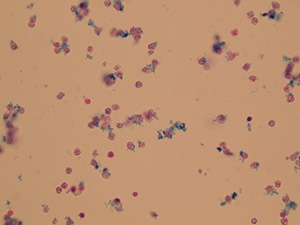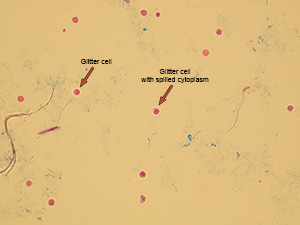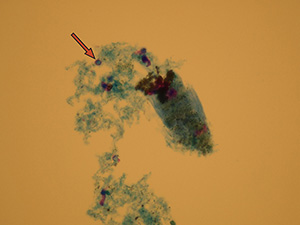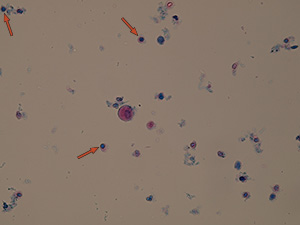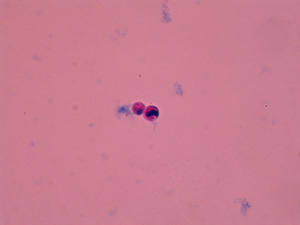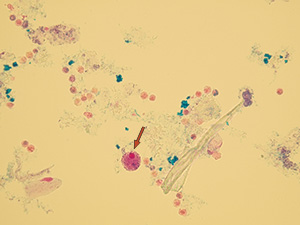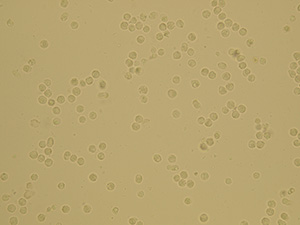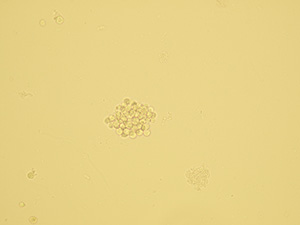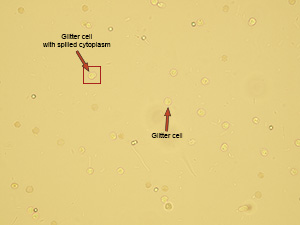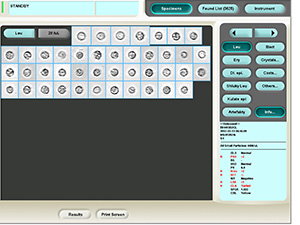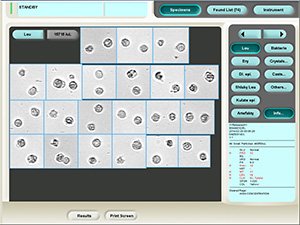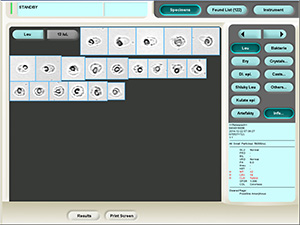Faculty of Medicine, Masaryk University
RNDr. Miroslava Beňovská, Ph.D., Mgr. Ondřej Wiewiorka, MUDr. Jana Tůmová
Leukocytes (WBCs)
Neutrophil granulocytes are the most common leukocyte subcategory in urine. Their cells are round shaped with the size of 16–22 µm and with segmented nucleus in the center of the cell. The leukocyte nucleus may or may not be stained by the dye – vital leukocytes with undamaged membrane have colorless nucleus, cells with damaged membrane have their nucleus stained blue.
Other leukocyte types in urine such as lymphocytes (they have a large nucleus that fills almost the entire cell), monocytes (with nucleus in the shape of a horseshoe or a bean) and activated monocytes called macrophages can be rarely found. Diagnostic strip doesn’t react with these leukocytes.
The granulocyte presence is typical especially for bacterial infections of urinary tract or kidneys. Semiquantitative detection with diagnostic strip is based on reaction with granulocyte esterase.
The presence of increased numbers of lymphocytes after renal transplantation is an important sign of kidney rejection.
Macrophages
Macrophages play important role in immune reaction. Their primary function is phagocytosis – absorption of elements inside their cells. They belong among mononuclear leukocytes, meaning they have just one non-segmented nucleus. They evolve from monocytes in tissues. The macrophages have increased amount of lysosomes and vacualized cytoplasm. They may be seen with phagocyted erythrocytes (erytrophages), lipid droplets (lipophages) or crystals.
Glitter cells
Some leukocytes are in hypotonic urine particularly distinguishable by the Brownian movement of granules inside their cells. This gave these neutrophil granulocytes the name "glitter cells". In some cases, especially in hypotonic urine, the leukocyte membrane may rupture and spill some of the cytoplasm outside of cell. We may observe this in samples of patients with interstitial nephritis.
Stained sediment
Native sediment
Pictures from iQ 200 analyzer (IRIS)
Mgr. Ondřej Wiewiorka , MUDr. Jana Tůmová|
KLT, Faculty of Medicine, Masaryk University |
Back to Homepage, accessibility |
| Service Center for E-learning
| Faculty of Informatics, Masaryk University, 2015
Centrum interaktivních a multimediálních studijních opor pro inovaci výuky a efektivní učení | CZ.1.07/2.2.00/28.0041

